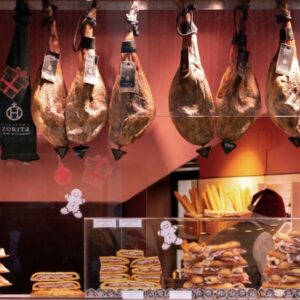
Ancient Beginnings
The concept of preserving meat dates back to ancient civilizations. In ancient Egypt, meats were preserved through drying and salting to ensure they remained edible during long periods without refrigeration. Similarly, the Chinese developed methods of curing and smoking meats as early as 2000 BCE. These early techniques laid the groundwork for the deli meats we enjoy today.
In ancient Rome, the process of salting and curing meats became more refined. The Romans were particularly fond of sausages, and they developed a variety of recipes using pork, a precursor to many modern deli meats. The Roman practice of curing meats spread throughout their empire, influencing culinary traditions across Europe.
Medieval Europe
During the Middle Ages, the art of meat preservation continued to evolve. In Europe, particularly in regions like Germany and Italy, methods such as smoking, curing, and fermenting meats became commonplace. These techniques not only extended the shelf life of meats but also enhanced their flavors.
In Germany, the creation of sausages became an integral part of the culture. The famous bratwurst and other varieties of sausages were developed during this time, each with unique regional flavors and ingredients. Meanwhile, in Italy, the tradition of making cured meats like prosciutto and salami was perfected, creating delicacies that are still celebrated today.
The Rise of Delis
The concept of the delicatessen, or deli, began to take shape in the 18th and 19th centuries. European immigrants brought their culinary traditions to America, establishing small shops that specialized in selling cured meats, sausages, and other prepared foods. These delis quickly became popular, offering a taste of home to immigrants and introducing new flavors to the American palate.
In New York City, the deli culture flourished, particularly among Jewish immigrants from Eastern Europe. These delis became known for their pastrami, corned beef, and other kosher meats. The Katz’s Delicatessen, founded in 1888, is one of the most iconic examples of this era, still serving classic deli sandwiches to this day.
Industrialization and Mass Production
The industrial revolution brought significant changes to the production and distribution of deli meats. Advances in refrigeration and transportation allowed meats to be preserved and transported over long distances, making them more accessible to the general public.
The development of mass production techniques also played a crucial role. In the early 20th century, companies like Oscar Mayer began to standardize the production of deli meats, ensuring consistent quality and safety. These innovations made deli meats more affordable and convenient, cementing their place in American households.
Modern Delis and Innovations
Today, delis continue to evolve, reflecting contemporary tastes and concerns. While traditional meats like ham, turkey, and roast beef remain popular, there has been a growing interest in artisanal and gourmet deli meats. Small producers are experimenting with unique flavors and techniques, offering products that cater to a more discerning audience.
One of the significant trends in modern delis is the focus on health and sustainability. Consumers are increasingly seeking out organic and nitrate-free options, as well as meats from animals raised without antibiotics or hormones. This shift is driving the industry towards more transparent and ethical practices.
Challenges and Safety Concerns
Despite their popularity, deli meats have faced challenges, particularly regarding food safety. The risk of contamination with harmful bacteria like Listeria monocytogenes has led to several high-profile recalls and concerns among consumers. Listeria can thrive in refrigerated environments, making deli meats particularly vulnerable.
In recent years, there have been notable instances of deli meat listeria outbreak lawsuits, where affected individuals have sought compensation for illnesses linked to contaminated products. These outbreaks underscore the importance of stringent safety measures in the production and handling of deli meats.
The Future of Deli Meats
As we look to the future, the deli meat industry is likely to continue its trajectory of innovation and adaptation. Advances in food technology, such as high-pressure processing and natural preservatives, are being developed to enhance safety without compromising flavor.
Moreover, the rise of plant-based alternatives is creating new possibilities for deli meats. Companies like Beyond Meat and Impossible Foods are producing plant-based deli slices that mimic the taste and texture of traditional meats, catering to the growing number of vegetarians and vegans.
Conclusion
The history of deli meats is a rich tapestry that weaves together ancient practices, cultural traditions, and modern innovations. From the early methods of preservation to the sophisticated production techniques of today, deli meats have evolved to meet the changing needs and tastes of society. Despite challenges, including food safety concerns, deli meats remain a beloved staple, offering convenience, flavor, and a connection to culinary heritage. As we move forward, the industry will continue to adapt, ensuring that deli meats remain a delicious and safe option for generations to come.